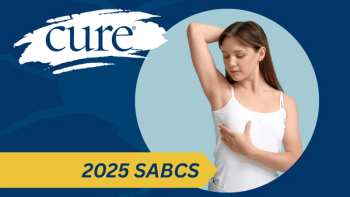
Gel Manicures and Cancer: What's Known and How to Play It Safe
In recent years, concern has grown over the ultraviolet (UV) lights used to dry the gel nail polish. They give off UVA rays, which cause aging and skin cancer.
A gel manicure dries in seconds, never smudges and lasts longer than a couple days. It’s benefits like these that make them attractive to salon-goers, but are they safe?
In recent years, concern has grown over the ultraviolet (UV) lights used to dry the gel nail polish. They give off UVA rays, which cause aging and skin cancer. These are the same kind as those in tanning beds, only with less intensity. Therefore, some doctors warn it could put those who get these manicures at an increased risk for skin cancer. However, Mario Lacouture believes there is not enough data to support this claim. Lacouture is a dermatologist and director of the Oncodermatology Program at Memorial Sloan Kettering Cancer Center and author of “Dr. Lacouture’s Skin Care Guide for People Living With Cancer.“
“In terms of the UV light, there is no prospective studies that have analyzed the data with manicure lamps,” said Lacouture. “It’s very difficult to measure because of the variability to how frequently women will be exposed to these manicures and to extrapolate that to whether or not that really does lead to an increase in skin cancer.”
Overexposure to UV light from the sun or artificial methods (such as gel lamps or tanning beds), conversely, can be harmful and lead to eye and skin damage or skin cancer.
A study published in The Journal of the American Medical Association (JAMA) reviewed two cases of women who developed nonmelanoma skin cancers on their hands. Neither of the healthy, middle-aged women had personal or family history of skin cancer, but both did report previous exposure to UV nail lights. One of the women, reported getting her nails done twice a month for 15 years.
While Lacouture has looked at this study, he adds that there are probably many other women out there who are also getting the gel manicures with the UV light and have not developed those skin cancers. This information, he points out, was not included in the study.
On the other hand, “There are many other patients, tens of thousands, who also developed skin cancers on their hands, like these, and have never been using those kinds of devices,” Lacouture explained. “For example, this usually occurs in men. The data for this causing skin cancer is really weak. That said, anyone with a family or personal history of skin cancer, or who is taking a medication that sensitizes them to UV rays (certain anti-inflammatories, antibiotics, and anticancer medications) should avoid the gel lamps or use sunscreen or gloves covering the skin when exposed to them. In addition to the risk for skin cancer, what may be more frequent and visible is the aging of the hands (wrinkling, sun spots) that will develop from exposure to gel lamps without protection.”
The American Cancer Society suggests applying sunscreen to hands and fingers before using one of the lamps. Lacouture agrees, suggesting one that is at least an SPF 15 and a broad spectrum sunscreen. He advises applying one time if you will only be under the UV lamp for a short period of time.
Another possibility for those choosing to keep up with gel manicures is to use anti-UV gloves. These gloves — which only cost about $10 – protect your skin from the UV radiation because they only leave your nails exposed.
“The concern about these gel manicures, from what I have heard from patients, is that when they remove the gels the process by which they remove those gels leaves the nails very thin and very rough and brittle, so I would be more concerned about the quality of the nails after they gel is removed,” said Lacouture. “So that would be a reason why people may want to avoid these, but if people really want to get them, use sunscreen or use the gloves.”
A statement from The Skin Cancer Foundation’s website reads in part: “Some nail lamps are called UV lamps, and some are called LED lamps, but both emit UV radiation. They predominantly produce UVA rays, which have been linked to both premature skin aging and skin cancer. However, even the most intense of these devices presents only a moderate UV risk — a far lower risk than that presented by UV tanning devices.”
Meghan Rothschild, of the Melanoma Foundation of New England and a stage 2 melanoma survivor herself, agrees that there is not enough evidence at this time supporting the fact that gel manicures increase skin cancer risk.
“This really reminds me of the whole scare around sunscreens having toxic chemicals and people being adamant that sunscreen isn’t good for you, and there’s toxic chemicals in it,” Rothschild said. “When in reality, there haven’t been any studies to support that that’s true.”
Rothschild also advises people to be aware of their own skin and make yearly visits to a dermatologist who can look for suspicious marks or moles.





